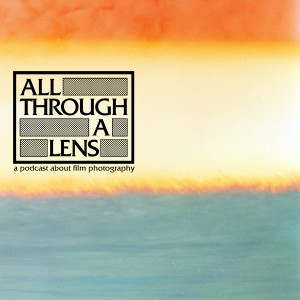
On this episode, we’ve got tips from listeners, a call with Iowa Amy, how to do your own tri-chromes, we’ll talk about a couple of pictures we took, there’s zine reviews and so much more.
We first check in with each other. Vania is looking for inspiration, but realizes it’s been there all along. Eric just wanted some snow. Sort of. Vania talks about how the camera is her way of interacting, while Eric realizes that he’s getting old.
Those who bought the Slow Meow film are thanked, and those interested in the ECN-2 process are invited to find out via the kits Eric is making: Here.
Moving on once more to the answering machine, we asked listeners to call in with their film photography tips. Just one, and make it quick.
The response was great! We received such advice as “don’t be afraid” and “every frame is a lesson” to the practical advice like “throw away the lens cap” and “get an immersion heater.” It was a lovely mix. Thanks to all who called in!
Vania and Eric gave their own tips as well. Obviously.
We then gave a call to Amy Blessing. You might know her as @iowaamy on IG. She was in the first American Colors show in St. Louis and is working on a project and book documenting towns along the Mississippi River in Iowa.
If you’re not familiar with her work, it explores the empty spaces of small town, Midwestern life. While many will often overlook this part of the country, Amy and her photography embody it.
We talked to her about her rural work, and shooting in the Midwest in general.
DIY Tri-Chromes!
After the call, we dig into how to shoot your own tri-chromes! These are the color photos that are actually created by three black & white photos layered together.
Here’s a quick rundown:
First, you’ll need some panchromatic black and white film. Let’s just use Tri-X or T-Max or basically anything that isn’t Ortho. Something fast works best. Get yourself a camera, a tripod and a red, green and blue filter. These can be cheaply procured in a color filter set, or more expensively procured individually as filters with the Wratten numbers of 29, 61, and 47 (red, green and blue).
Find a subject – something with various colors represented. Set up the camera on the tripod and take three photos – the first through the red filter, the second through the green, and the last through the blue. I do them in this order so I can remember them when it comes time to scan. Make sure to not move the camera even a little. You want three identical pictures.and you will be needing to line this up in photoshop.
Develop the film in your favorite black & white developer, and then scan them in as normal. It would be a good idea to name them as “red,” “green,” and “blue” just so you can keep track of them.
Then open the images in your photo editor and align them to each other so that they’re all perfectly matched. Starting with the red layer, you want to “colorize” it. Open the colorize menu (the location varies) and tint it red. This “hue” is usually represented by “0” on the color wheel. Then set saturation to 75 and brightness to -30.
Do the same with the Green and Blue layers – setting the hue to 120 and 240, respectively (on some editor, it’s 33 and 66). The saturation and brightness are the same as with the red.
Now we’re almost finished. All we have to do is make them transparent. In the Layers panel, we need to set this to “Screen” for the top two laters and “Normal” for the bottom (at this point, it doesn’t matter which layer is where). Once we do this, the color image will appear!
Next on the episode, we take a look at two of our photos, both from the Fuck Yeah We Do zine.
Both go on about it for a spell.
Zine Reviews
On this episode, we reviewed two zines. The first was Camerastickers by Ethan Cameradactyl.
In Ethan’s own words: ‘They are the lowest quality prints you’ve ever seen in a zine, and the binding is even worse. The books are bound to fall apart, and the stickers are all thermal, which is basically the opposite of archival. But they’re pretty fun. I think you and Vania and most of your listeners would probably get a real kick out of them.’
The other zine was Every Bus Stop Has Its Own Coffee Shop by Richard Hall. This is a color and black & white halfsize zine that’s really a lovely stroll through Shrewsbury.
Along the way, we stop to hear him point out bits of history and information. There’s the Welsh Bridge, The Buttermarket (aka Butters), and Shrewsbury Abbey. But this isn’t simply one tour. This zine takes place over the entire year, night and day. There’s the evening life in the market, and a morning commute up St. John’s Hill. We wind our way through the streets, and along the river until finally returning to the Porthill Footbridge.
Be sure to check out our Dev Party episodes. They’re about to get even more pee-inducing!
Music by Last Regiment of Syncopated Drummers










5 years ago
Haha - I completely forgot to mention my name when I submitted the photo tip. Mine is the succinct "ditch the lens cap, use filters instead" - @crookandflail on IG :)